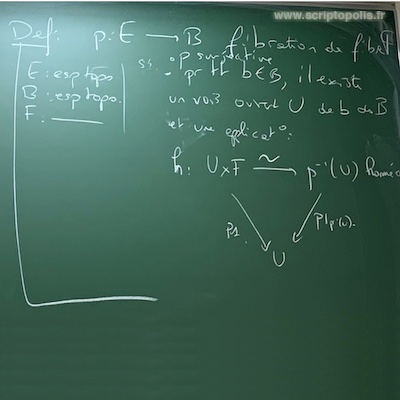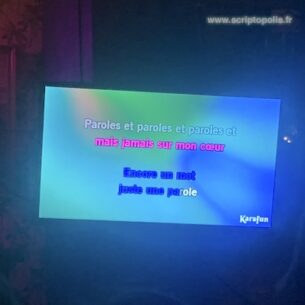Definitions

By our guest : Laurine Lièvremont
Paris, September 2021.
The definition of the fiber bundle of fiber F is written hastily and made as short as possible thanks to abbreviations. It becomes impossible to understand when one does not master the notions that the definition uses. What is a “vois”, a “homéo” or an “esp topo”? The mathematical notations used in this diagram are so concise that they are almost incomprehensible, even if they still define rigorously an object. However, it is hard to know exactly what it looks like, even when one is a mathematician.
The construction of a new tool, the fiber bundle, is based on the notions of neighbourhood, topological space, homeomorphism and on a choice of relations between them. Many questions arise from this inscription: why choose these objects for the definition instead of others? Why link them in this way? Will their association help to continue the mathematical work? Moreover, once the fiber bundle of fiber F is defined, how can one study it, use it in proofs and make sure that it is “useful”?
Such a complex definition enlightens the arbitrary decisions needed to construct a mathematical object. However, every great breakthrough in fundamental mathematics was made possible by the introduction of relevant objects and their use through new methods of proofs. The creation of new abstract objects is at the heart of mathematical progress, rather than new technologies and the inscription methods they allow, which contribute to experimental sciences only. Those newly tools are then set in motion within proofs impossible without them, and these proofs enable mathematicians to create more elaborate objects again. Thus fundamental mathematics rotate between creation and analysis of their own constructions, and this circularity has no comparison in experimental sciences.






